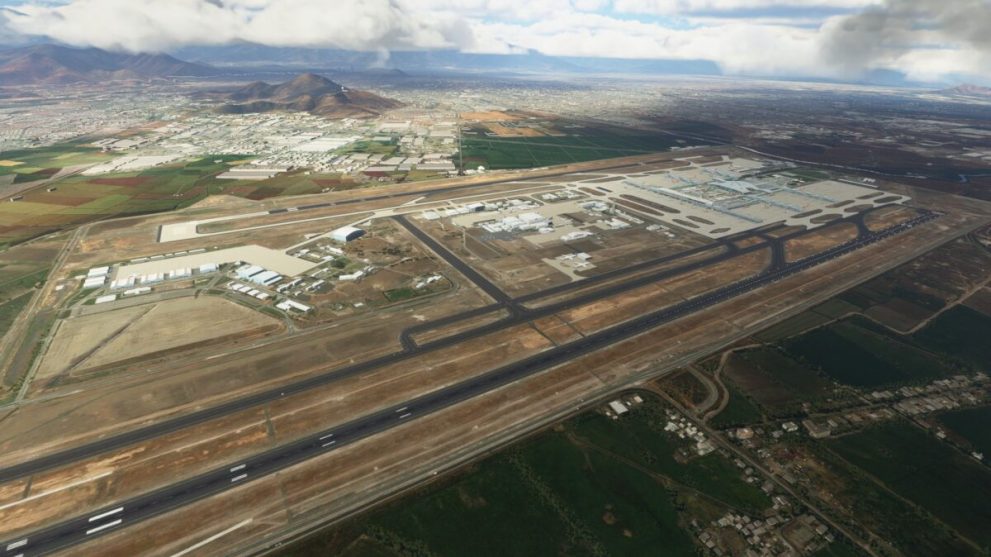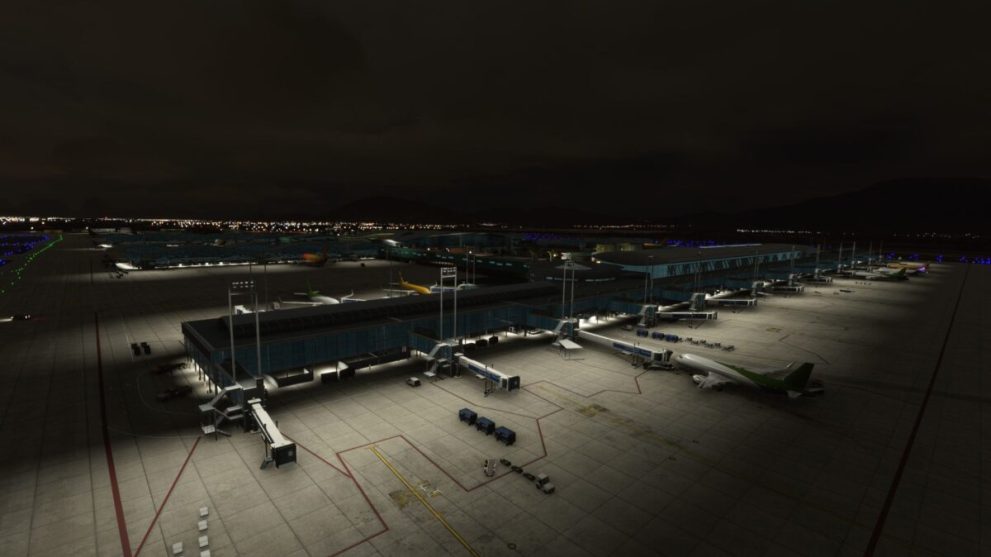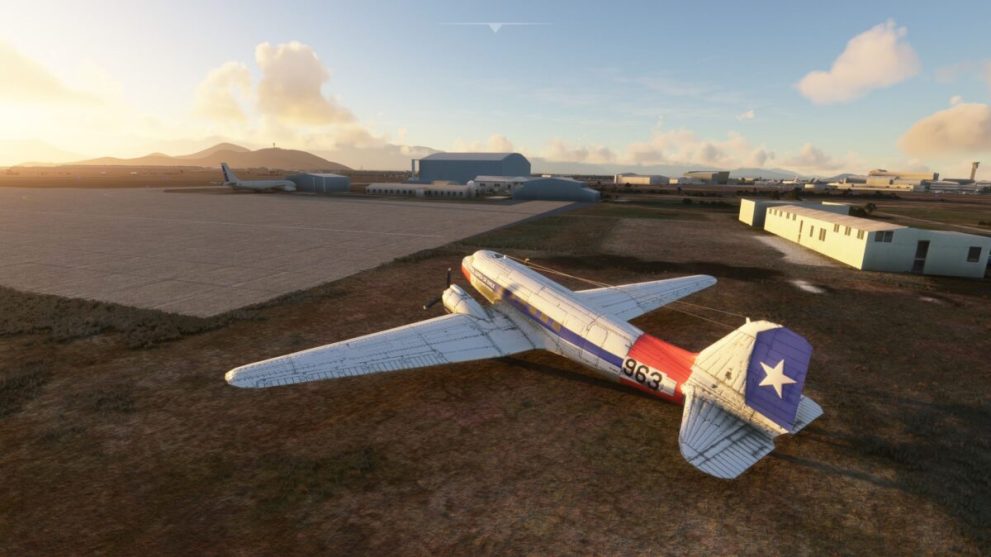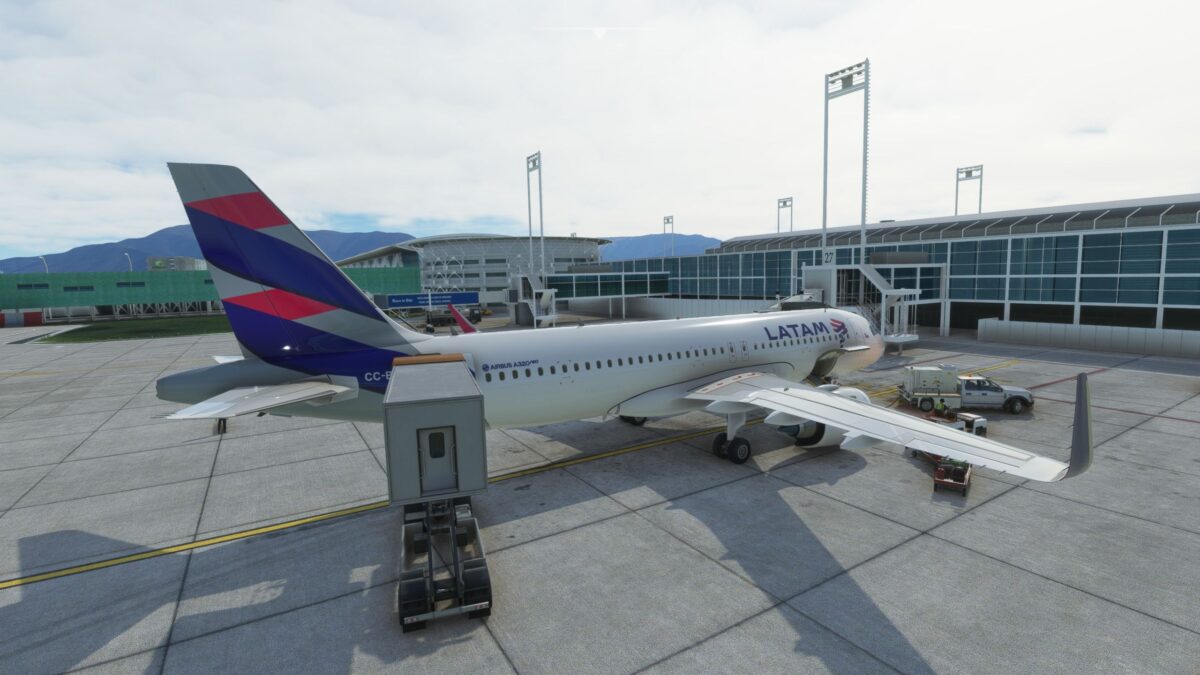Third-party developer LatinVFR recently released Arturo Merino Benítez International Airport (SCEL) in Santiago, Chile, for Microsoft Flight Simulator.
The airport is a very relevant location in Latin America home to a large volume of both airline and cargo traffic. That being said, it’s a peculiar case for this particular application.
It’s at the end of a very extensive expansion process that is supposed to be completed toward the end of 2021 and will triple the airport’s capacity. This means new terminals, plenty of new gates, and a situation of flux that makes reproducing the airport really challenging.
LatinVFR opted, understandably, to portray SCEL in its future completed state. The consequence is that some elements likely had to be modeled from plans rather than from real-world sources.
If you’d like to see in detail what the airport looks like, the first video above showcases an ILS approach and landing on runway 17L, while the second below provides a detailed flyover of the whole area.
SCEL can be purchased on LatinVFR’s own store for $17.99 or on the official Microsoft Flight Simulator marketplace. If you don’t get it from the official marketplace it’ll use the Contrail app, which makes its installation and update effortless.
As you can easily notice in the videos, the airport benefits from an extremely scenic location in a wide valley among the mountains of Chile, making approach and landing procedures both interesting and gorgeous. Unfortunately, the city of Santiago itself isn’t very well portrayed in the sim, with no landmarks to enliven its skyline. That being said, it does an adequate job from the distance.
The developers did a really good job with reproducing the complex patchwork of materials of runways, taxiways, and aprons, and the weathering is very nice as well, with plenty of rubber markings, dirt, and stains that give the airport a realistic and “lived” look and feel.
The one exception is the northern part of taxiway Papa, which appears to display an outdated choice of materials according to all the recent video and photographic sources I could find. There also appears to be an occasional elevation issue creating a bump on runway 35L. It appears only occasionally, but it’s better to look out for it, since it’s in the aiming zone.
Most of the markings on the runways and taxiways appear to be accurate, but when we get on the aprons, most are outdated, with triangular black and yellow gate indicators that have been semi-recently replaced by a different setup. Many of the parking paths are missing or oriented incorrectly and the red clearance area markings that exist in the real world are not portrayed. On top of that, Gate 17 is marked at “16” on the jetway (you basically have two Gate 16s. Likely an oversight).
This doesn’t heavily affect operations, since taxiways and gates are labeled correctly enough that ATC provides useful guidance, but it may need an update pass in the future. To LatinVFR’s credit, recent photographic and video sources are extremely difficult to find for this part of the airport.
All the SIDs, STARs, and navigation aids work correctly. The only exception is if you use Navigraph. A temporary limit on runway operations created an incompatibility with Microsoft Flight Simulator, so SIDs and STARs are removed. Of course, this is not LatinVFR’s fault and it’s easily solved simply by uninstalling Navigraph’s custom data when you use the airport, at least until the temporary issue is removed.

All the PAPIs are also correctly calibrated, providing helpful visual landing references. Ground services are all available, including the much-neglected fuel trucks that so many developers omit. From the operational point of view, the airport showed no issue once I removed Navigraph’s data.
SCEL is a very large airport, so not only you get an extensive operational area for airliners, but you also have two cargo aprons, a business jet area, and a military base. There is plenty to see and explore regardless of which branch of aviation you aim to simulate.
The modeling is reasonably well done across the board, even if details and texture resolution can be a little inconsistent. This is fairly common in airports of this size and scope, as developers try their best to find a balance between beauty and performance.
The jetways are detailed and pleasant to the eye, but many seem to be unable to extend as far as required to connect with the aircraft, regardless of body width. This is likely an oversight. Many of the gates in the real world also feature two jetways, but they all have only one in this scenery.

The terminal buildings are fairly detailed, and feature modeled interiors. This excludes the central international terminal, which may be considered a viable tradeoff, considering that you don’t get as close to it during normal operations as opposed to the piers extending from it. Those are quite fetching with the transparent glass alternating with solid panels and the visible interiors beyond.
There are a few inaccuracies. The skylights on top of the international terminal face the wrong direction (north rather than south as in the real airport). The prominent “Aeropuerto Arturo Merino Benitez de Santiago” sign on the landside face of the terminal is missing, and the same can be said about the solar farm on the roof of the domestic terminal, which the airport’s administration appears to be very proud about.
Other relevant buildings like the tower, the main hangars, and the cargo warehouses are quite fetching, while those that have likely been considered less important are a bit flat, likely to save hardware resources.
There are quite a few static aircraft, but they’re on the secondary and cargo aprons, smartly placed out of the way of the AI aircraft (which don’t have any problem negotiating the airport) and normal operations. These include a few KC-135 and an old Douglas DC-3 of the Chilean Air Force that add flavor and realism to the military apron.

Night lighting is good on runways, aprons, and taxiways, and generally pleasant elsewhere even if some of the terminals appear to be a bit dark.
Snow coverage isn’t perfect, but it’s better than in many other airports, so I’d say it’s adequate considering that third-party developers continue to struggle in general with the interaction between snow and ground materials.
Rain works well with the airport’s textures, creating very fetching visuals. Unfortunately, both rain and snow aren’t stopped by roofs, so they affect terminal interiors and sheltered areas. That being said, airports in which this doesn’t happen are still very rare.
In terms of performance, LatinVFR did a great optimization job. On my PC (RTX 3070, Ryzen 9 3900x, 32 GB RAM) at 1440p resolution and Ultra detail settings, I lose only 3-4 FPS compared to the default scenery in Microsoft Flight Simulator.


This is impressive considering that the airport is massive and that the improvement compared to the default scenery is equally large (you can see what I mean above). As a matter of fact, I’d say there is still plenty of performance overhead for possible future updates.
While this add-on isn’t perfect, most likely due to the transitional state the real airport is in, which makes finding and verifying visual sources very challenging, the folks at LatinVFR is well-known for extensively updating their scenery, so I certainly hope that when the real SCEL is complete, there will be another visual pass to correct the issues.
Ultimately, considering that the default scenery isn’t only very poor, but also extremely outdated (by several years, missing 70% of the terminals and gates), this scenery is basically the only way to simulate current operations realistically, which certainly adds value to the package.
Hopefully, the developers will keep working on it down the line because the base is solid and Santiago is really a great airport to visit, located in a beautiful area of an equally charming country.
- It's a massive improvement over the extremely outdated default scenery.
- Good material simulation for runways, taxiways, and aprons, with great weathering.
- Good static aircraft, including military and historical models.
- Extremely scenic location.
- Outdated apron markings.
- The detail of models and textures isn't always consistent.
- There are a few inaccuracies here and there.













Updated: May 2, 2021 11:00 am